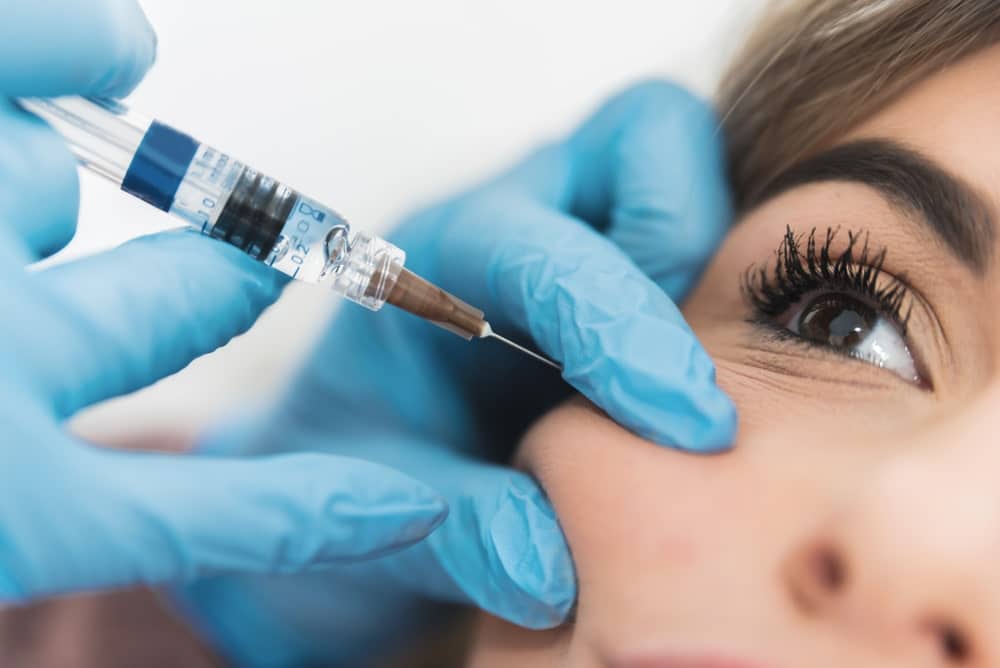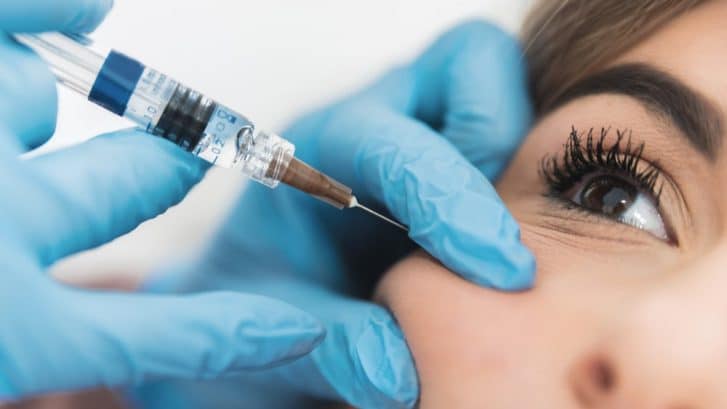
Botox is one of the most popular cosmetic procedures in the U.S. Botox injections are minimally invasive, highly effective, and do not cause rebound effects. It’s safe to get subsequent Botox injections after the initial effects wear off without causing any damage to the underlying tissues and skin. In fact, repeated Botox injections can slow the aging process over the course of many years.
Botox is highly effective for what is called “active” wrinkling. These are the lines and creases people get when they frown, smile, laugh, or otherwise move their face. For deep-set wrinkles that are present even when the face is relaxed, Botox can minimize the appearance, although it can not get rid of them like it can for active wrinkling. Different cosmetic procedures are useful for eliminating the appearance of deep-set, permanent lines and wrinkles. But what about lines or wrinkles on or around the cheeks? Can Botox do anything to improve appearances here? Keep reading to find out more about getting Botox injections for this area of the face.
It is a myth that people are injecting a deadly toxin into their face when they get Botox injections. However, it is true that Botox is derived from the botulinum toxin or botulism. This toxin will paralyze muscle tissue, and without swift medical treatment, people infected with botulism can die. But there are several strands of the botulism toxin, and Botox is derived and reconstituted from certain strands of botulism into a non-toxic form. When a board-certified plastic surgeon injects Botox into a patient, the material is put into an isolated region of the muscle tissue.
The repeated contracting, relaxing, and contracting again of the face muscles will wear down the skin and lead to wrinkles and creasing. What Botox injections will do is paralyze the underlying muscles of the face, and prevent this repeated contracting and subsequent wrinkling. When a patient gets Botox injections, the face is smoothed, and the muscles are unable to contract for some time. The ability to effectively paralyze the muscle tissue for an extended period will prevent further breakdown of the skin and wrinkling. This is the mechanism by which Botox helps to slow the aging process.
Botox can be safely injected in the face and the neck. For some conditions, a doctor may inject Botox into the shoulder area. While Botox is most commonly used for cosmetic procedures, it is also useful for treating certain health problems, including chronic migraines, and dystonia, a genetic condition. Botox is most commonly injected into the forehead, the area between the eyes, sides of the eyes, and the chin and front of the neck. For specific cosmetic issues, Botox can be injected into the cheeks.
Many things are going on during the aging process. The contracting of the facial muscles and wrinkling of the skin above is one part of the process. Collagen breaks down, causing sagging, and delicate fats in the facial tissue also break down and lead to a hollowing-out of the cheeks and the area beneath the eyes. As a person ages, they may notice the cheeks sagging or hollowing. Botox is not ideal for reversing the aging process here. Instead, fillers can be injected and used to create a fuller, more youthful appearance in the cheeks.
As mentioned earlier in the article, Botox is used for active wrinkling, since it paralyzes the facial muscles where it is injected. If a person has creasing at the nasolabial folds that outline the bottom of the cheeks, Botox can help. But if a patient wants to regain a full appearance to the cheeks, it’s best to speak to their doctor about other cosmetic procedures, like the fillers Restylane, Radiesse, or possibly a cheek lift.
Getting Botox injected should be done by a board-certified plastic surgeon in a doctor’s office. The procedure will take about an hour, and the amount of Botox a person needs to have injected will depend on many things, including the number of areas they want to be treated, and if they’ve had Botox injections before. A Botox veteran will typically need more units injected than a person who has never used Botox before.
Botox itself does not hurt, but having the needle inserted is what causes pain in some patients. Everyone has a different pain tolerance level so that some patients may be more bothered by injections than others. It is possible for the doctor to apply a topical anesthetic to the injection area, or to ice the area to minimize discomfort.
After injection, there may be some swelling, or bruising at the site. This is to be expected and should clear up within a few days to a week. Even if the area is swollen or sore, patients should not rub, massage, or otherwise apply pressure to the area for at least 24 hours after the procedure. Patients should also avoid strenuous activity for the first 24 hours after injection, too. Moving the Botox material via message or vigorous exercise can cause it to leave the injection site, and paralyze other parts of the face. This can cause a person to have a crooked or uneven appearance, which his something patients would want to avoid. However, if this happens, a doctor can try to fix it with additional injections if needed. But it is important to understand that once Botox is injected, it cannot be removed.
Patients will see a noticeable effect within ten days to two weeks after injection. The results should last for at least three months, and in some cases can last for as long as six months. Once the effects wear off, patients will not experience a rebound effect, and the face will look like it did right before the patient had the last set of Botox injections.
Are you looking to turn back the clock and regain a more youthful appearance? Contact the office of board-certified facial and reconstructive surgeon Doctor Binder today for safe, effective, and affordable Botox injections.

